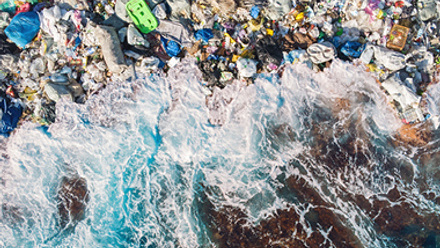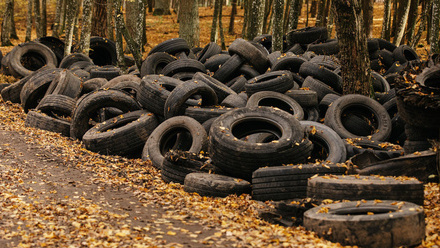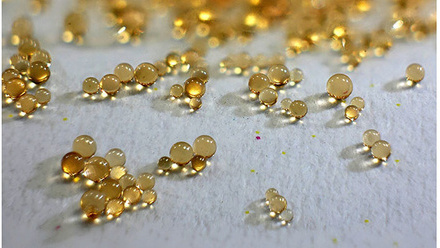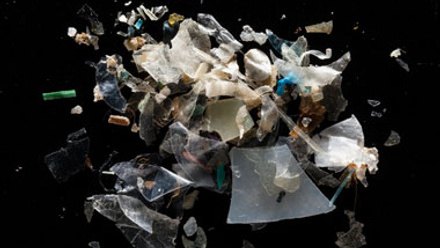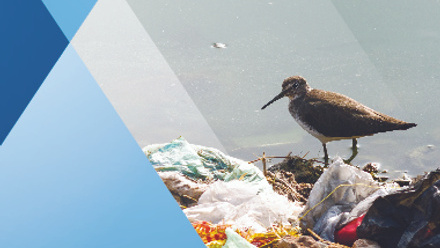Filling Gaps for Micro- and Nanoplastic Effects and Risk in Multiple Stressed Aquatic Environments
Ana I Catarino, Flanders Marine Institute; Anna T Kukkola, University of Birmingham; Stacey L Harper, Oregon State University; and Jana Asselman, Ghent University
Microplastics and nanoplastics (MNPs) are a significant concern in aquatic environments, affecting biota as complex mixtures. However, the consequences of environmentally realistic MNPs exposures are poorly understood, and suitable data for high-quality risk assessments are limited. Most field research and toxicity testing has focused on micron size ranges, leaving knowledge gaps in understanding smaller nanoplastics (< 1µm). Furthermore, to quantify the scale of MNP effects, a broader approach is needed, considering plastics complexity and other environmental stressors, such as climate change. This session’s goal was to discuss MNPs effects assessment under a broader framework to provide suitable data for improved risk assessments.
Effects of nano-, microplastics, and temperature on crustaceans
The study examined the effects of MNPs and other particles exposures on aquatic biota, focusing on the impact of particle sizes, polymer types and sublethal concentrations on organismal responses. An international research group from the Technical University of Munich (Germany), Oregon State University and University of California (USA), exposed the model species Hyalella azteca and Americamysis bahia to fluorescent polystyrene beads of nano- and micro-sizes, as well as cotton, nylon, Polyethersulfone (PES) and hemp fibers in different temperatures. The results showed high variability in uptake and mortality, with higher uptake of 1,000 nm polystyrene particles at higher temperatures. The study suggested that the predicted increase in surface water temperatures by climate change may add to the risk of nano- and microplastic pollution to organisms in aquatic ecosystems.
How do microplastics exacerbate virus-related mortality in a commercially valuable salmonid species?
In this work, researchers from National Institute of Standards and Technology (NIST), Virginia Institute of Marine Science (VIMS) and William & Mary (USA) explored how microplastics affect the virus-based response of salmonid fish species. In a controlled experiment, rainbow trout were exposed to varying doses of microparticles, including nylon fibers and ground expanded polystyrene and ground grass as positive control. The study found that fish co-exposed to infectious hematopoietic necrosis virus (IHNV) and microplastics, especially nylon fibers, had a higher viral load and shed than those exposed to virus alone. Researchers highlighted the importance of microplastics as a co-stressor, not just as a singular threat. The increase in relative disease virulence may be due to increased susceptibility to infection and enhanced disease transmission between individuals.
Multi-stressor effects of chemicals and microplastics in fresh-water environments
In this presentation, researchers from the University of Birmingham (UK) explored the challenges in replicating exposure pathways to plastic-related pollution within controlled and simplified testing scenarios. They used the example of Daphnia magna, a well-established test organism, which has data for chemical effects. That data can be used to establish baseline responses to aquatic pollution stressors and rank chemicals based on toxicity. The study exposed D. magna to three chemicals: triclosan, Sodium Dodecyl Sulphate, and diclofenac, in three distinct types of culture media in the presence of polyethylene MPs, calculating their initial dose responses. The variability in toxicity depended on both the exposure media and media properties such as presence of natural organic matter and the chemical properties of the pollutants. The authors concluded that to increase the realism of the exposure risk calculations, it is essential to consider this variability at the test design stage–environmental factors that could be drivers for chemical and microplastic mixture toxicity.
Combined effect of salinity and leachates of environmental plastics on the copepod Nitokra spinipes
This study aimed to analyze the ecotoxicological effect of leachates from environmental and weathered plastics on the harpacticoid copepod Nitokra spinipes in two brackish water conditions (7 and 15 PSU). In a collaborative work, researchers from the Flanders Marine Institute (VLIZ, Belgium) and Instituto de Limnología ‘‘Dr. Raúl A. Ringuelet,” UNLP-CONICET (Argentina), collected samples of Polyvinyl Chloride (PVC), Polyethylene (PE), and Polypropylene (PP) from coastal areas in Belgium and Argentina, from which leachates were extracted in brackish water and tested for toxicity. PVC leachates induced an increase of mortality of adult copepods, with no additional effects of salinity, while PP and PE leachates had no effect. PVC leachates, however, had an additional effect on larval development at higher salinities (15 PSU) compared to 7 PSU (control). Their results contribute to understanding the complexity of plastics as a diverse group of pollutants in estuarine ecosystems.
Long-term effects of microplastics on a benthic community: A mesocosm experiment
A collaboration between Roskilde University, Aalborg University and Technical University of Denmark (DTU) (Denmark), highlighted how scientific literature on MPs in sediments is limited, leading to knowledge gaps related to population- and community-level effects. To address this gap, a five-week large-scale mesocosm experiment was conducted to investigate the potential population- and community-level effects of MP exposure under environmentally relevant exposure conditions. The experiment exposed specimens of Macoma balthica, Corophium volutatror and Monoporeia affinis, in a community structure representing species diversity and abundance, to a suite of polymers tested at both environmentally relevant concentration and a 1,000-fold higher concentration. The researchers found no effects of survival, growth or significant changes in community structure after five weeks of exposure. They also did not observe effects on survival, growth or ingestion rate in the complementary experiment. These no-effect results are important to consider in the context of future microplastic risk assessments in sediment.
This session, which took place at the SETAC Europe 33rd Annual Meeting from 30 April–4 May in Dublin, attracted a substantial number of attendees, indicating the widespread concern regarding the combined effects of plastic-related pollution and other environmental stressors and its impact on biota. Attendees posed pertinent questions, facilitating an engaging and constructive dialogue. A broader view of MNPs effects is needed, particularly in combination with other anthropogenic effects for a risk assessment of environmental impacts, addressing the current apprehensions of the public and policymakers.
Author’s contact: [email protected]



